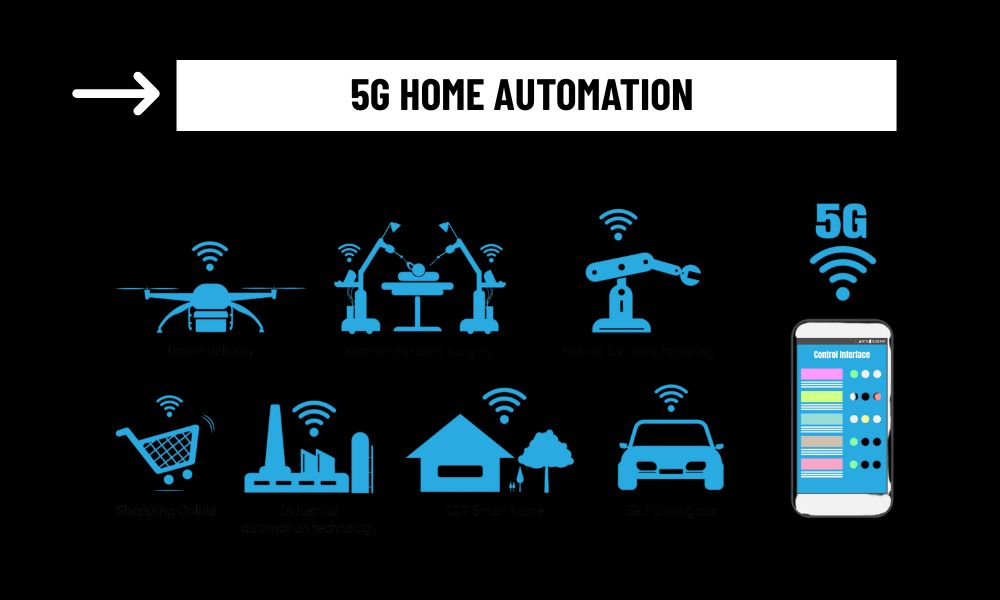Smart homes are no longer just convenient—they’re becoming intelligent ecosystems capable of adapting to human behavior, optimizing energy, and enhancing security. But as the number of connected devices grows, existing wireless infrastructure often falls short. This is where 5G home automation emerges as a transformative force.
By enabling faster communication, ultra-low latency, and massive IoT support, 5G networks are poised to redefine the smart home experience. This article explores how 5G is revolutionizing home automation and what it means for the future of digital living.
The Limitations of Current Smart Home Networks
Most smart homes today rely on Wi-Fi, Zigbee, Z-Wave, or Bluetooth Low Energy to connect devices. While these technologies work well in small setups, they often encounter challenges as systems scale:
- Bandwidth congestion when too many devices compete for limited spectrum
- Latency delays that hinder real-time automation
- Signal interference in dense environments
- Limited device capacity per network gateway
These limitations make it harder to support advanced automation features like high-definition video surveillance, real-time environmental monitoring, or AI-powered routines. 5G home automation offers a solution by delivering high-speed, low-latency connectivity designed for dense and dynamic smart environments.

What 5G Brings to Home Automation
1. High-Speed Connectivity
With speeds up to 100 times faster than 4G, 5G enables near-instantaneous communication between smart devices and cloud services. Whether you’re streaming live 4K footage from a security camera or issuing voice commands to a home assistant, 5G home automation ensures that interactions are seamless and immediate.
This speed is especially valuable for bandwidth-heavy devices such as smart TVs, cloud-connected appliances, and high-res video doorbells.
2. Ultra-Low Latency Automation
Latency—the delay between command and response—is critical in real-time automation. 5G reduces latency to as little as 1 millisecond, enabling near-instant responses.
This empowers new levels of smart home functionality, including:
- Immediate motion-triggered lighting or alarms
- Split-second voice command execution
- Real-time data syncing for AI or predictive systems
- In a 5G home automation system, your devices don’t just respond—they anticipate and adapt in real time.
3. Greater Device Density and Scalability
A major advantage of 5G is its ability to support up to one million connected devices per square kilometer. For smart homes, this means:
- More sensors per room (temperature, occupancy, light, air quality)
- Smart appliances with constant cloud communication
- Layered security systems with multiple cameras and detectors
5G home automation removes the bottlenecks of older networks and opens the door to densely integrated smart environments—from multi-story homes to entire apartment complexes.
Security and Privacy in a 5G Smart Home
As connectivity increases, so does the importance of data privacy and cybersecurity. 5G networks include advanced encryption and network slicing capabilities that enhance protection for smart home data.
In a 5G home automation ecosystem:
- Network slicing can separate security devices from entertainment systems, minimizing risk
- Edge computing allows sensitive data (e.g., facial recognition) to be processed locally instead of being sent to the cloud
- Network traffic can be monitored and isolated more easily for anomaly detection
While no system is entirely immune to threats, 5G provides the infrastructure for smarter and more secure device communications.
5G Use Cases in Home Automation
Smart Security Systems
High-definition video surveillance, facial recognition, and AI detection systems require fast, stable bandwidth. 5G enables real-time streaming, mobile notifications, and remote monitoring without lag.
Remote Healthcare
Connected health devices—like smart beds, glucose monitors, or emergency wearables—can relay data to doctors or family members instantly, improving response times for elderly care and chronic condition management.
Energy Optimization
Real-time energy analytics, solar panel systems, and smart grid integration rely on constant data flow. 5G home automation supports the high-frequency updates needed to optimize energy use minute by minute.
Immersive Entertainment
With 5G, VR/AR applications in gaming or interior design, and multi-room ultra-HD streaming become standard—allowing for richer, lag-free media experiences throughout the home.

Looking Ahead: The Future of 5G Smart Homes
As 5G infrastructure expands globally, we will see smart homes evolve from isolated systems to unified, AI-driven environments. Homes will learn from daily habits, communicate with smart cities, and even respond to environmental data like weather and air quality in real time.
Imagine a scenario where:
- Your car enters your driveway, triggering the garage, lights, and preferred climate settings
- Your home checks air pollution and runs air purifiers before you walk in
- Your devices communicate with your wearable to adjust music, lighting, and energy settings based on your mood or heart rate
- This level of automation becomes possible—and practical—with 5G home automation as the underlying network.
Smarter Homes Need Smarter Networks
The growing complexity of smart homes demands a more powerful, flexible, and scalable communication backbone. 5G home automation delivers that backbone—enabling real-time responsiveness, higher device density, and seamless cloud interaction.
Whether you’re upgrading a few smart lights or building an intelligent energy-efficient home from the ground up, 5G will be the technology that ensures everything works together—quickly, securely, and intelligently.
The future of home automation is not just smart—it’s 5G smart.
